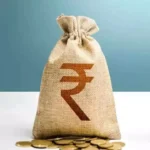NEW DELHI: Retail food inflation eased for the five consecutive months to 2.69% in March compared to 3.75% in February, as prices of vegetables, pulses and spices declined with winter harvest arriving in the markets. The consumer food price index (CFPI) declined by 0.86% sequentially last month compared to February. In March last year, the food inflation rate was 8.52%.
The food inflation rate for March 2025 is the lowest since November 2021, when it was reported at 1.87%.
Inflation in onions rose by 19.435% in March, 2025 on year. Tomato inflation declined by 35% on year, last month, while in February prices declined by 28% on year.
The inflation in the vegetable category declined by 7.04% last month, compared to an inflation of 1.07%% in February. However, edible oil and fruit inflation remained high at 17.07% and 16.27% respectively last month.
Overall cereal inflation in March was 5.93% and had been in single digits for the past several months because of softening of rice prices due to bumper harvest.
However inflation in wheat last month was 9% on year.
“Food inflation was low but was kept higher due to edible oils where inflation was 17% and fruits 16.2%. The former will continue to exert pressure as it is determined by international prices as well as exchange rate,” Madan Sabnavis, Chief Economist, Bank of Baroda, said.
Inflation in mustard oil and refined oil were 19.56% and 23.54% respectively last month on year because of the rise in global prices. India imports about 58% of its edible oil consumption.
Inflation in pulses declined by 2.73% last month for second successive months on the prospects of robust kharif as well as rabi harvest. Inflation in pulses were as high as 113% in August,2024.
Retail inflation in pulses have been in double digits since June, 2023 because of lower output of key varieties of pulses like chana, tur and urad.
However the gram split variety of pulses reported an inflation of 10.4% last month while in February the price rise was 13.8% on year. The price rise in arhar was in the negative zone (- 9.79%) last month because of a high base effect.
“While the initial forecast of an ‘above normal’ monsoon is encouraging, the timing and distribution will be key for the implications for agri output and food inflation going ahead,” Aditi Nayar, Chief Economist, ICRA Said.
Inflation in the meat and fish category was just 0.32% last month. Chicken and egg prices declined by 5.86% and 3.16% respectively in March. Price rise in milk last month was only 2.56% on year.
Inflation in spices continues to decline since September last year as it declined by 4.92% last month on year. Jeera prices declined by 25.86% on year.
Source: The Financial Express

 Bank Credit In India Likely To Grow At 12-13% In FY26: Crisil Ratings
Bank Credit In India Likely To Grow At 12-13% In FY26: Crisil Ratings 